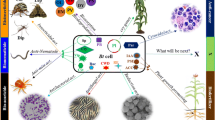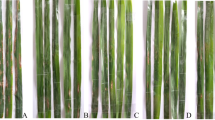Abstract
Tea industry is the back bone of agro-economy of the tea producing regions. Tea mosquito bug, Helopeltis theivora Waterhouse is one of the most devastating sucking pests of tea and is a menace to tea plantations of North Bengal and other states of NE India. Insecticide forms the mainstay of pest management programme in tea plantations. Insecticide stress and selection have led to the development of high tolerance or resistance in many pests including the sucking bug H. theivora. LC50 value of an organophosphate insecticide, monochrotophos (SL 36 %) to this species increased about 105 fold when selected by exposure to sub-lethal dose for three generations. Generation-wise relative tolerance level when selected by sub-lethal dose of monochrotophos showed a significant increase in 1st and 2nd filial generations as compared to the parental generation (P < F1 < F2). General esterases (GE) activity got enhanced by 5.32 and 16.4 fold, and the activity of cytochrome P450 monooxygenases (CYP) increased by 1.96 and 9.50 fold in F1 and F2 generations respectively as compared to parental generation. The generation-wise increase in relative resistance and the activity of defence enzymes were found to have high positive correlation; r = 0.999 for GE and r = 0.994 for CYP. The study suggests that the titres of GE and CYP in H. theivora can be used as the markers of relative tolerance to insecticides in general, with mode of action similar to monochrotophos. Such defence-enzyme based detection technique for tolerance levels may help early identification of resistant population of H. theivora; hence its management.
Similar content being viewed by others
References
Anonymous., 1990. Proposed insecticide/acaricide susceptibility tests. IRAC method No. 7. Bulletin of the European Plant Protection Organisation 20: 399–400.
Bora, S., M. Sarmah, A. Rahaman, and G. Gurusubramanian. 2007. Relative toxicity of pyrethroid and non-pyrethroid insecticides against male and female tea mosquito bug, Helopeltis theivora Waterhouse (Darjeeling strain). Journal of Entomological Research 31: 37–41.
Brogdon, W.G., and J.C. McAllister. 1998. Insecticide resistance and vector control. Emerging Infectious Disease 4: 605–613.
Cao, Chuan-Wang, J. Zhang, Xi-Wu Gao, Pei Liang, and Hui-Lin Guo. 2008. Differential mRNA expression levels and gene sequences of carboxylesterase in both deltamethrin resistant and susceptible strains of the cotton aphid, Aphis gossypii. Insect Science 15: 209–216.
Das, G. M. 1965. Pest of Tea in North-East India and their control. Memorandum No. 27. Tocklai Experimental Station, Tea Research Association, Jorhat, Assam, India: 169–173.
Djouaka, R.F., A.A. Bakare, O.N. Coulibaly, M.C. Akogbeto, H. Ranson, J. Hemingway, and C. Strode. 2008. Expression of the cytochrome P450 s, CYP6P3 and CYP6M2 are significantly elevated in multiple pyrethroid resistant populations of Anopheles gambiae s.s from Southern Benin Nigeria. BMC Genomics 9: 538.
Feyereisen, R. 1999. Insect P450 enzymes. Annual Review of Entomology 44: 507–533.
Finney, D.J. 1971. Probit analysis. London: Cambridge University Press. 333.
Gurusubramanian, G., A. Rahman, M. Sarmah, S. Ray, and S. Bora. 2008. Pesticide usage pattern in tea ecosystem, their retrospects and alternative measures. Journal of Environmental Biology 29: 813–826.
Hemingway, J., N.J. Hawakes, L. McCarroll, and H. Ranson. 2004. The molecular basis of insecticide resistance in mosquitoes. Insect Biochemistry and Molecular Biology 34: 653–665.
Hernandez, R., F.D. Guerrero, J.E. George, and G.G. Wagner. 2002. Allele frequency and gene expression of a putative carboxylesterases-encoding gene in a pyrethroid resistant strain of the tick Boophilus microplus. Insect Biochemistry and Molecular Biology 32: 1009–1016.
Komagata, O., S. Kasai, and T. Tomita. 2010. Overexpression of cytochrome P450 genes in pyrethroid-resistant Culex quinquefasciatus. Insect Biochemistry and Molecular Biology 40: 146–152.
Lowry, O.H., N.J. Rosenbrough, A.L. Farr, and R.J. Randall. 1951. Protein measurement with Folin phenol reagent. Journal of Biological Chemistry 193: 265–275.
Miller, R.J., R.B. Davey, and J.E. George. 1999. Characterization of pyrethroid resistance and susceptibility to coumaphos in Mexican Boophilus microplus (Acari: Ixodidae). Journal of Medical Entomology 36: 533–538.
Muraleedharan, N. 2007. Tea insects: ecology and control. In Encyclopedia of pest management, ed. David Pimentel, 672–674. London: CRC Press.
Rattan, P.S. 1992. Pest and disease control in Africa. In Tea: Cultivation to Consumption, ed. K.C. Wilson, and M.N. Clifford, 331–352. London: Chapman and Hall.
Roy, S., A. Mukhopadhyay, and G. Gurusubramanian. 2010. Development of resistance to endosulphan in populations of the tea mosquito bug Helopeltis theivora (Heteroptera: Miridae) from organic and conventional tea plantations in India. International Journal of Tropical Insect Science 30: 61–66.
Roy, S., G. Gurusubramanian, and A. Mukhopadhyay. 2009. Variation of resistance to endosulfan in tea mosquito bug, Helopeltis theivora waterhouse (heteroptera : miridae) in tea plantation of the Sub-Himalayan Dooars, northern West Bengal, India. Journal of Bacteriology Research 1: 29–35.
Saha, D., S. Roy, and A. Mukhopadhyay. 2012. Insecticide susceptibility and activity of major detoxifying enzymes in female Helopeltis theivora (Heteroptera: Miridae) from sub-Himalayan tea plantations of North Bengal, India. International Journal of Tropical Insect Science 32: 85–93.
Sahgal, A., Kumar, S., and Pillai, M.K.K. 1994. Microplate assay of elevated esterase activity in individual pyrethroid-resistant mosquitoes. Journal of Biosciences 19: 193–199.
Shono, T., K. Ohsawa, and J.E. Casida. 1979. Metabolism of trans- and cis-permithrin, trans-and cis-cypermethrin and decamethrin by microsomal enzymes. Journal of Agricultural and Food Chemistry 27: 316–325.
van Asperen, K. 1962. A study of housefly esterases by means of a sensitive colorimetric method. Journal of Insect Physiology 8: 401–414.
Wu, S., Y. Yang, G. Yuan, P.M. Campbell, M.G. Teese, R.J. Russell, J.G. Oakeshott, and Y. Wu. 2011. Overexpressed esterases in a fenvalerate resistant strain of the cotton bollworm, Helicoverpa armigera. Insect Biochemistry and Molecular Biology 41: 14–21.
Yu, S.J. 2008. The toxicology and biochemistry of insecticides. Boca Ration: CRC Press and Taylor and Francis Group.
Zhang, M., and J.G. Scott. 1996. Cytochrome b5 is essential for Cytochrome P450 6D1-mediated Cypermethrin resistance in LPR house flies. Pesticide Biochemistry and Physiology 55: 150–156.
Zhu, F., R. Parthasarathy, H. Bai, K. Woithe, M. Kaussmann, R. Nauen, D.A. Harrison, and S.R. Palli. 2010. A brain-specific cytochrome P450 responsible for the majority of deltamethrin resistance in the QTC279 strain of Tribolium castaneum. Proceedings of the National Academy of Sciences of the United States of America 107: 8557–8562.
Acknowledgments
We acknowledge the financial Grant provided by the University Grants Commission, New Delhi, India to Prof. A. Mukhopadhyay, Principal Investigator and Mr. D. Saha Co-investigator of the Major Research Project [F. No. 40-366/2011 (SR)] and the facilities provided under the SAP-II of the Department of Zoology, NBU. This work is a part of the proposed Ph D research work of the first author (K. Basnet). We are thankful to the Head, Department of Zoology, University of North Bengal for providing us necessary infrastructures and help for carrying out the research.
Author information
Authors and Affiliations
Corresponding author
Rights and permissions
About this article
Cite this article
Basnet, K., Saha, D. & Mukhopadhyay, A. Enhancement of Resistance vis-à-vis Defence-Enzyme Activity in Tea Mosquito Bug, Helopeltis theivora Waterhouse (Hemiptera: Miridae) Selected Through Exposure to Sub-lethal Dose of Monochrotophos. Proc Zool Soc 68, 184–188 (2015). https://doi.org/10.1007/s12595-014-0124-5
Received:
Revised:
Accepted:
Published:
Issue Date:
DOI: https://doi.org/10.1007/s12595-014-0124-5




